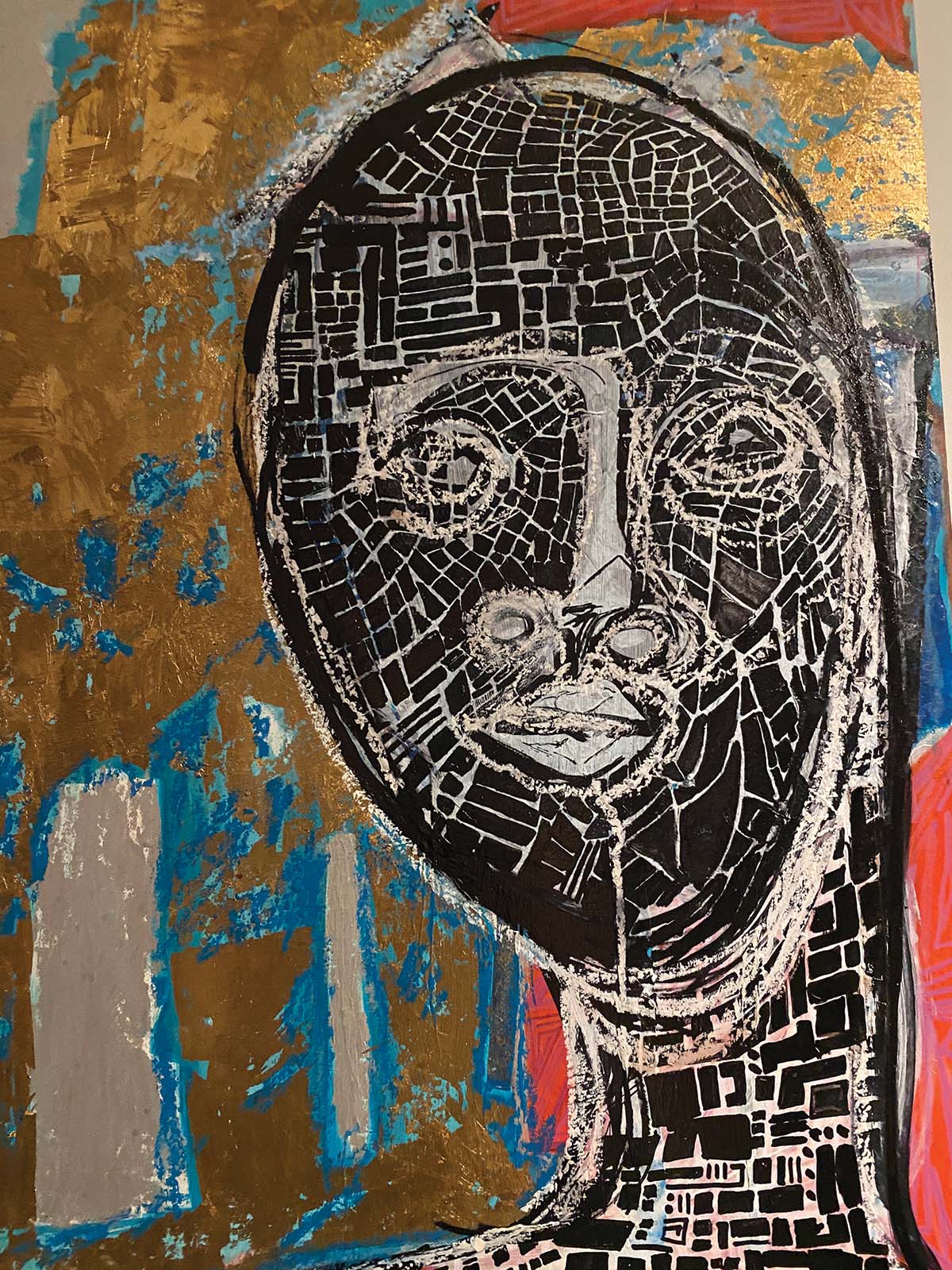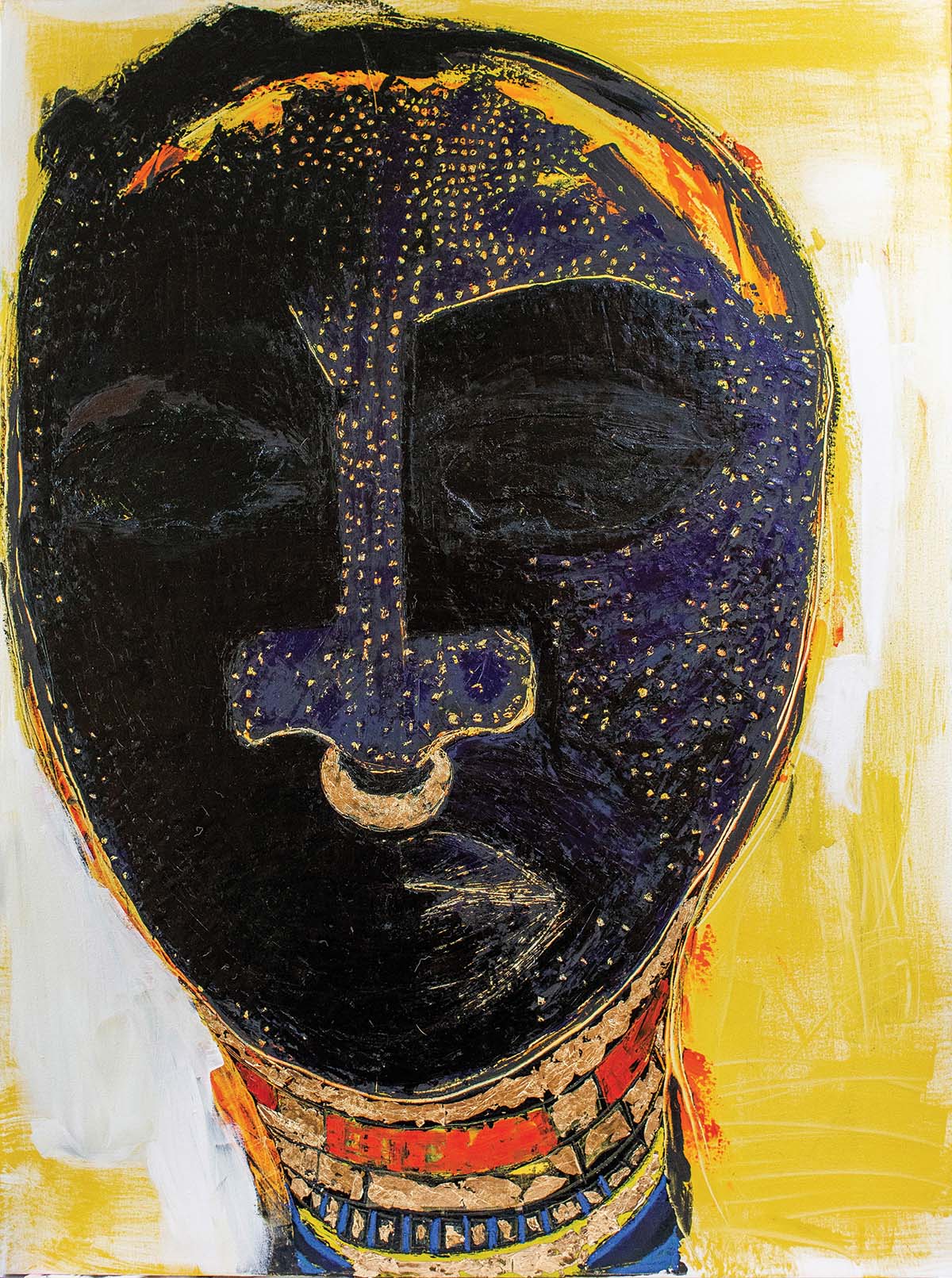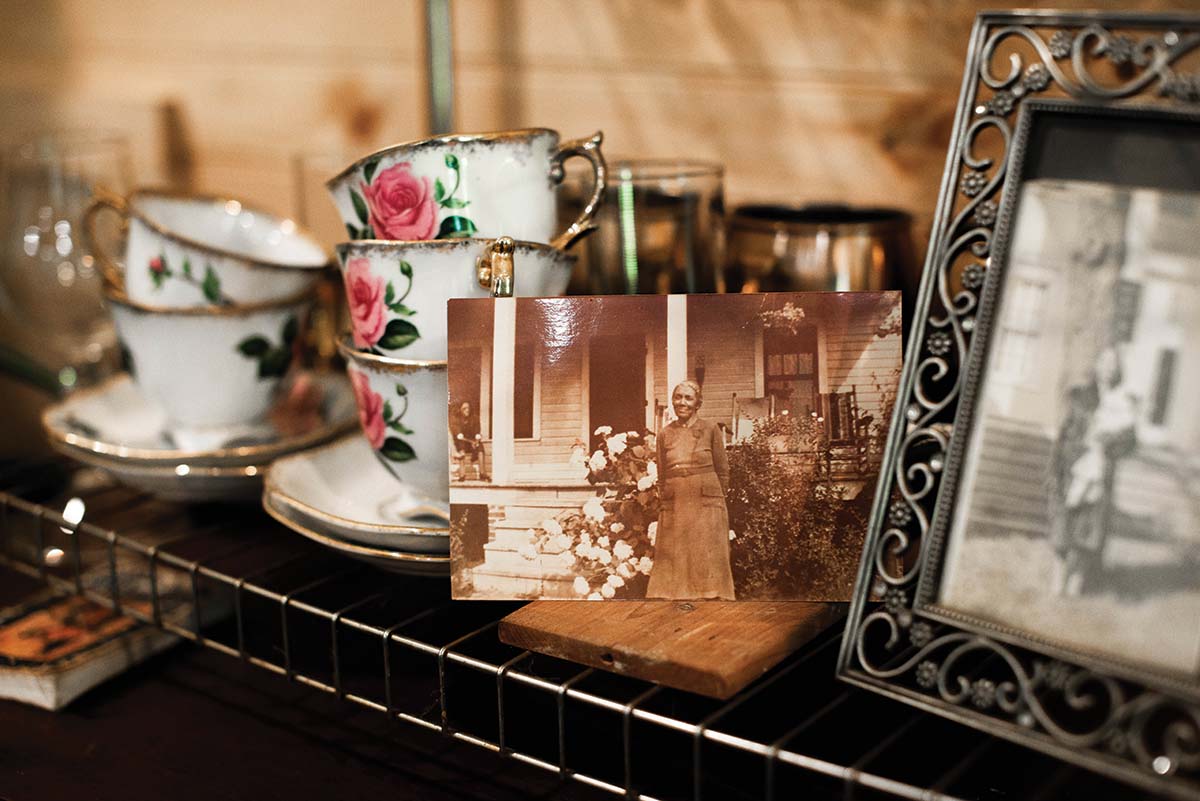
LaKisha Blount, a self-described Affrilachian painter based in Gerton, NC, in Henderson County, focuses on visual documentation and preservation of Black, Southern, and Appalachian culture. She holds a BFA in Graphic Arts from Western Carolina University, and her work, found in private collections across the region, has been exhibited at venues including the UNCA Highsmith Art and Intercultural Gallery and the Bascom Center for the Visual Arts in Highlands, NC.
How’s life since you moved from Asheville to the woods?
I love it. In the city, it was like, “I don’t have anything to do, let’s just ride around until we figure some stuff out.” Now my life is intentional.
Did you get into art from a young age?
Yeah, I didn’t do much schoolwork. I wanted to daydream and create. Teachers would call my parents in and be like, “Kisha’s really happy, but we cannot get her to focus. She just stares out the window.” Daddy got so mad. I told him, “I am focusing, I’m just working on other stuff.”

Where did you grow up?
Texana, which is the Black community of Murphy, NC, named after my great aunt [Texana “Texas” McClelland]. My family is from these mountains, and the earliest record of them here is from 1741.
Why is documentation and preservation important to you?
Someone has to tell their story. My third-generational grandmother asked her future daughter-in-law to take a paper-bag test in order to marry her son. [Historically, this was a form of racial discrimination that compared skin tone to the color of a brown paper bag.] I wondered if her ancestor, the first enslaved woman brought over here, was ever faced with that.
I have a photo of her [the woman who imposed the test], and I used that as inspiration for Ah Shay to depict an ancestor who would not have met the same scrutiny of beauty in her homeland. I painted her as darkly complected as I possibly could, gave her a gold nose ring that my third-generation grandmother would be opposed to, and dotted up her face. In some African tribes, scarification is absolutely beautiful. In this one painting I’m trying to fix colorism and address the lineage of ancestors and ask, “How does that work in this Americanized hierarchy of beauty?”
Future Undetermined was done after Trayvon Martin was murdered. Young Black men have an undetermined future due to policing. The painting called Black Mother in Fear is just that, a Black mother in fear for her son. Growing up Black, you have these conversations about “smile so you don’t make white people uncomfortable, don’t put your hands in your pockets in stores,” and where to put your hands when you’re pulled over by the police. But I didn’t think of that before from a mother’s perspective. As a mother, you’re fearful every second of every day whenever your child isn’t in your sight.

Does the subject of Black Mother show fear?
She knows best of all how to wear the mask, so you would have to know her to see it.
What’s your process to get stories to the canvas?
I’ll think of a family story, then move onto the canvas with the idea of emotion, and then paint free-form from intuition. I always paint with oils, because I love the richness, and oils are just as complicated as the subject matter.
Is your current show your debut solo exhibit?
Yes. And with the murder of George Floyd, people now want to hear Black voices and see Black art.
It’s about time.
Although Asheville says it’s very progressive and inclusive, there are Black artists here you just don’t hear about. The response I always got when people saw my art was, “Oh, it’s so sad!”

They said that to you?
Yes. White people said that. I guess my work made them confront the past … that makes people uncomfortable.
How did you find your painterly voice?
It found me. My graphics-design professor said, “Your work looks similar to this guy,” and turned me on to [Haitian American street-art painter Jean-Michel] Basquiat. From Basquiat I found Sue Coe, and from her I found Ben Shahn.
Everyone you just mentioned as inspirational is known not just as an artist, but also as a radical antiracist and antifascist badass.
Yes!
LaKisha Blount, Gerton. Blount’s debut exhibit runs at Ananda West (37 Paynes Way, #005, Asheville) through Monday, Sept. 14. To learn more, contact Ananda (828-236–2444, anandahair.com), see the artist’s web page, spark.adobe.com/page/8GqqNFqTzeF4v/, or e-mail kishab1@gmail.com. Four of Blount’s pieces will also be exhibited at Slocumb Galleries at East Tennessee State University in Johnson City from Sept. 4 through Oct. 16 (etsu.edu/cas/art/galleries).
How do I get in touch with this artist?